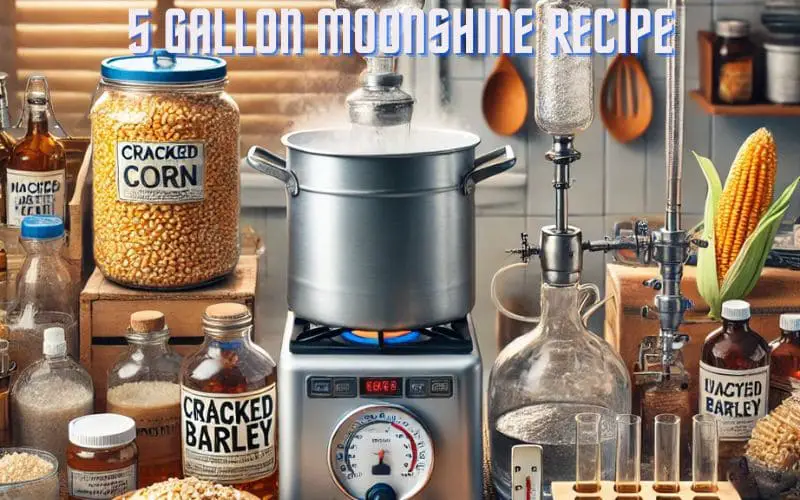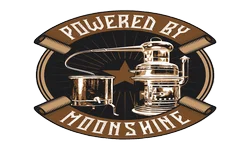We Have The Ultimate 5 Gallon Moonshine Recipe Guide For You

Introduction
Welcome to our moonshine adventure! In this informative article, we will explore the captivating world of moonshine, diving into its rich history, the artistry of distillation, legal considerations, and a delightful 5-gallon moonshine recipe. Join us as we unravel the mystique and charm behind this beloved drink, fusing innovation and history in every sip.
The Basics of Moonshine
What is Moonshine?
Moonshine, often referred to as white lightning, mountain dew, or hooch, is a type of high-proof distilled spirit. It is typically produced illicitly and has a long-standing history rooted in cultural significance and rebellion. Moonshine is known for its clear appearance, intense flavor, and relatively high alcohol content, making it a popular choice for enthusiasts seeking a unique drinking experience.
Legalities of Moonshine Distillation
Moonshine distillation has a complex legal framework that varies by region and country. While historically associated with illegal production, many jurisdictions have established regulations for the legal creation and distribution of moonshine. It is crucial for aspiring distillers to understand and comply with these regulations to avoid legal repercussions and ensure the safety of their craft.
5 Gallon Moonshine Recipe
Warning and Legal Disclaimer
Producing moonshine or any other form of distilled alcohol without the proper permits is illegal in many countries, including the United States. The following information is provided for educational purposes only. Ensure you are familiar with and comply with all local laws and regulations regarding alcohol production before attempting any of the following procedures.
Ingredients and Equipment
Ingredients:
- 8.5 lbs (3.86 kg) cracked corn
- 2 lbs (0.91 kg) malted barley (enzymatically active)
- 5 gallons (19 liters) of water
- 1 packet of distiller’s yeast (or any suitable high alcohol-tolerant yeast)
Equipment:
- Large pot or mash tun (at least 7-8 gallons capacity)
- Fermentation vessel (food-grade plastic or glass)
- Airlock and stopper
- Thermometer
- pH strips or meter
- Stirring spoon
- Heat source (stove or burner)
- Siphoning hose
- Distillation apparatus (still)
For a Custom Moonshine Still Click Here To Contact Us With Your Needs
No Need To Worry! We Don’t Report Anything To Any Government Agency!
Procedure
Preparing the Mash
- Heat the Water:
- Pour 5 gallons of water into the large pot or mash tun.
- Heat the water to approximately 165°F (74°C).
- Add the Corn:
- Slowly add the cracked corn to the water while stirring continuously to avoid clumping.
- Maintain the temperature at 165°F for 1 hour, stirring frequently. The temperature will drop; ensure it stays above 150°F (65°C).
- Cool Down:
- After 1 hour, allow the mash to cool to 152°F (67°C).
- Add the Malted Barley:
- Add the malted barley to the mash and stir well.
- Maintain the temperature at 152°F for 1 hour. This will convert the starches in the grains to fermentable sugars.
- Test and Adjust pH:
- Use pH strips or a meter to ensure the mash has a pH between 5.0 and 5.5. Adjust if necessary using citric acid or calcium carbonate.
- Cool the Mash:
- Allow the mash to cool to 70-75°F (21-24°C). This can be done by placing the pot in an ice bath or using a wort chiller if available.
Fermentation
- Transfer the Mash:
- Transfer the cooled mash to your fermentation vessel.
- Pitch the Yeast:
- Hydrate the yeast according to the package instructions and add it to the mash.
- Stir well to ensure the yeast is evenly distributed.
- Ferment:
- Attach an airlock and stopper to the fermentation vessel.
- Allow the mash to ferment in a dark, cool place (70-75°F) for about 5-7 days. Fermentation is complete when bubbles stop forming in the airlock.
Distillation
- Prepare the Still:
- Set up your still according to the manufacturer’s instructions.
- Ensure all connections are secure and that the apparatus is clean.
- Transfer the Wash:
- Siphon the fermented wash from the fermentation vessel into the still, leaving behind any sediment.
- Heat the Wash:
- Slowly heat the still. Alcohol will begin to vaporize at around 173°F (78°C).
- Discard the first 5% of the distillate collected. This “foreshot” contains methanol and other impurities.
- Collect the Distillate:
- Continue heating and collecting the distillate. This is the “heart” of the run and will contain the ethanol.
- Monitor the temperature and adjust the heat to maintain a steady flow.
- Cut the Distillate:
- As the temperature rises, the quality of the distillate will decrease. This is the “tails” of the run, which contains less desirable compounds.
- Stop collecting when the distillate becomes oily or unpleasant in smell and taste.
- Dilute and Bottle:
- Dilute the collected distillate with distilled water to the desired proof.
- Bottle the moonshine and allow it to rest for a few days to let any harshness mellow out.
Safety Precautions
- Ventilation: Always operate the still in a well-ventilated area to avoid the buildup of flammable vapors.
- Temperature Monitoring: Closely monitor the temperature to avoid overheating and potential explosions.
- Alcohol Testing: Use an alcoholmeter to test the alcohol content of your distillate.
By following these detailed steps, you can produce moonshine in a controlled and safe manner. Remember to respect all legal restrictions and consider the safety implications of home distillation.
Safety and Legal Considerations
Safe Handling of Moonshine
Moonshine, a high-proof distilled spirit, requires careful handling and responsible consumption. Here are some essential guidelines to ensure the safe handling of moonshine:
- Proper Storage:Moonshine should be stored in a cool, dark place, away from direct sunlight and excessive heat. It is best preserved in airtight containers to maintain its quality and potency.
- Safe Consumption: When consuming moonshine, it’s important to do so responsibly and in moderation. Due to its high alcohol content, it should be diluted or mixed with other beverages to reduce the risk of overconsumption.
- Handling Hazards: Moonshine production involves certain hazards, such as flammability and toxic fumes. Proper ventilation and adherence to safety protocols are crucial to minimize risks during production and storage.
By adhering to these safety precautions, both producers and consumers can enjoy moonshine safely while prioritizing their well-being.
Regulations and Laws
Regulations and Laws
- Understanding moonshine regulations and laws is essential for anyone involved in its production and distribution.
- Compliance with legal considerations ensures the preservation of moonshine’s cultural legacy and the protection of its enthusiasts.
- Some key areas to focus on include licensing requirements, quality standards, and safety regulations.
Conclusion
As our moonshine exploration comes to a close, we reflect on the fascinating journey through its history, distillation process, and legal implications. From uncovering the allure of moonshine to embracing the craft’s cultural significance, our expedition has shed light on the artistry and passion woven into every drop. As you continue your own moonshine adventure, remember the rich tapestry of tradition and innovation that defines this timeless spirit.
